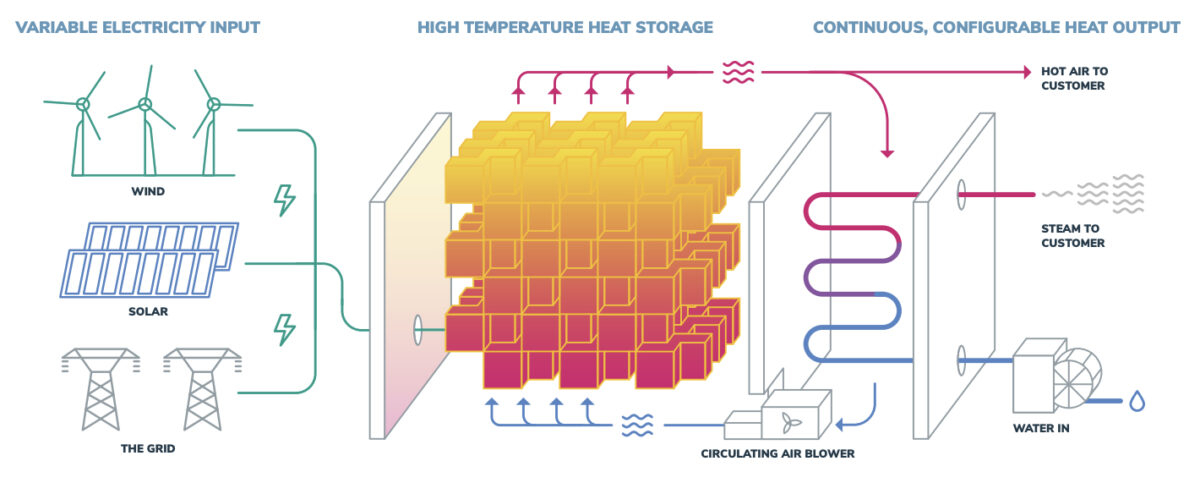Firebrick systems powered by renewable energy could be used for up to 90% of industrial process heat applications, the Stanford study says. Meeting that demand in the U.S. would require firebrick system capacity of 2.6 TWh, with a peak discharge rate of 170 GW.



I can buy all of it, near perfect heating, but 2% for their forced air circulation combined with turbine and generation losses? Seems too good to be true.
Chatgpt (because we’re all lazy) :
The overall thermal-to-electrical efficiency of a power plant, often referred to as plant efficiency, is the product of the steam turbine efficiency and the generator efficiency. Typical overall efficiencies for fossil-fuel-based steam turbine power plants (e.g., coal, natural gas) range from 33% to 40%.
In more advanced configurations like combined cycle power plants, which recover waste heat from the steam turbine exhaust to generate additional electricity, efficiencies can reach 50% to 60%.
Calculation Example:
If the steam turbine has an efficiency of 40%, and the generator has an efficiency of 98%, the total thermal-to-electrical efficiency would be:
\text{Total Efficiency} = 0.40 \times 0.98 = 0.392 \text{ or } 39.2%
So, for every 100 units of thermal energy input, 39.2 units are converted into electrical energy.
And that’s if you’re just heating the water before it hits the turbine, including the air circulation and basic entropy (there’s a limit to how much you can pull out via heat differential), it seems like it should go down from there.
They’re not converting it back into electricity, this is for industrial process heat. They have 100 units of electrical energy and 98 units go into whatever the industry needs to heat.
Lots of industries use ovens, kilns or furnaces. Mostly fueled by gas at the moment. Using electricity would be very expensive unless they can timeshift usage and get low spot prices. Since they need heat anyway, thermal storage is pretty cheap and efficient.
Oh, my bad. That makes perfect sense and I have no objections for purely thermal storage.
It said steam to customer, my brain filled that in with turbine.